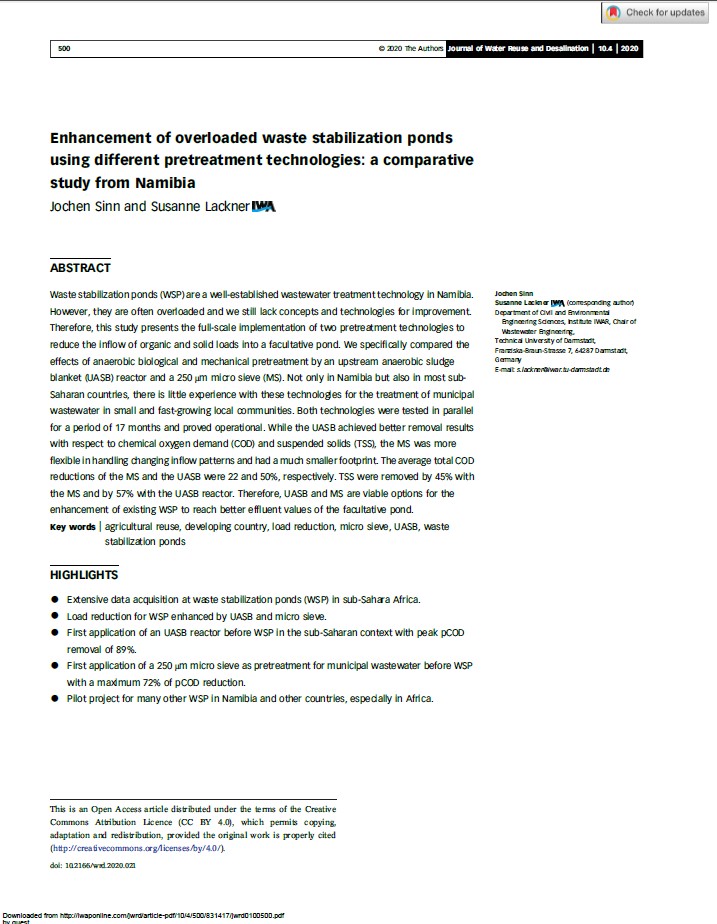Enhancement of overloaded waste stabilization ponds using different pretreatment technologies: a comparative study from Namibia
 |
article Dec 2020 ; 13 pages
Aut. Jochen Sinn &
Ed. IWA - London
Téléchargeable sous format: PdF
Téléchargeable chez l'éditeur
Abstract:
Waste stabilization ponds (WSP) are a well-established wastewater treatment technology in Namibia. However, they are often overloaded and we still lack concepts and technologies for improvement. Therefore, this study presents the full-scale implementation of two pretreatment technologies to reduce the inflow of organic and solid loads into a facultative pond. We specifically compared the effects of anaerobic biological and mechanical pretreatment by an upstream anaerobic sludge blanket (UASB) reactor and a 250 μm micro sieve (MS). Not only in Namibia but also in most sub-Saharan countries, there is little experience with these technologies for the treatment of municipal wastewater in small and fast-growing local communities. Both technologies were tested in parallel for a period of 17 months and proved operational. While the UASB achieved better removal results with respect to chemical oxygen demand (COD) and suspended solids (TSS), the MS was more flexible in handling changing inflow patterns and had a much smaller footprint. The average total COD reductions of the MS and the UASB were 22 and 50%, respectively. TSS were removed by 45% with the MS and by 57% with the UASB reactor. Therefore, UASB and MS are viable options for the enhancement of existing WSP to reach better effluent values of the facultative pond.
Mot clef: |
Pays concerné: |
Editeur/Diffuseur: |
|
IWA
-
International Water Association - London - Royaume Uni |
En cas de lien brisé, nous le mentionner à communication@pseau.org